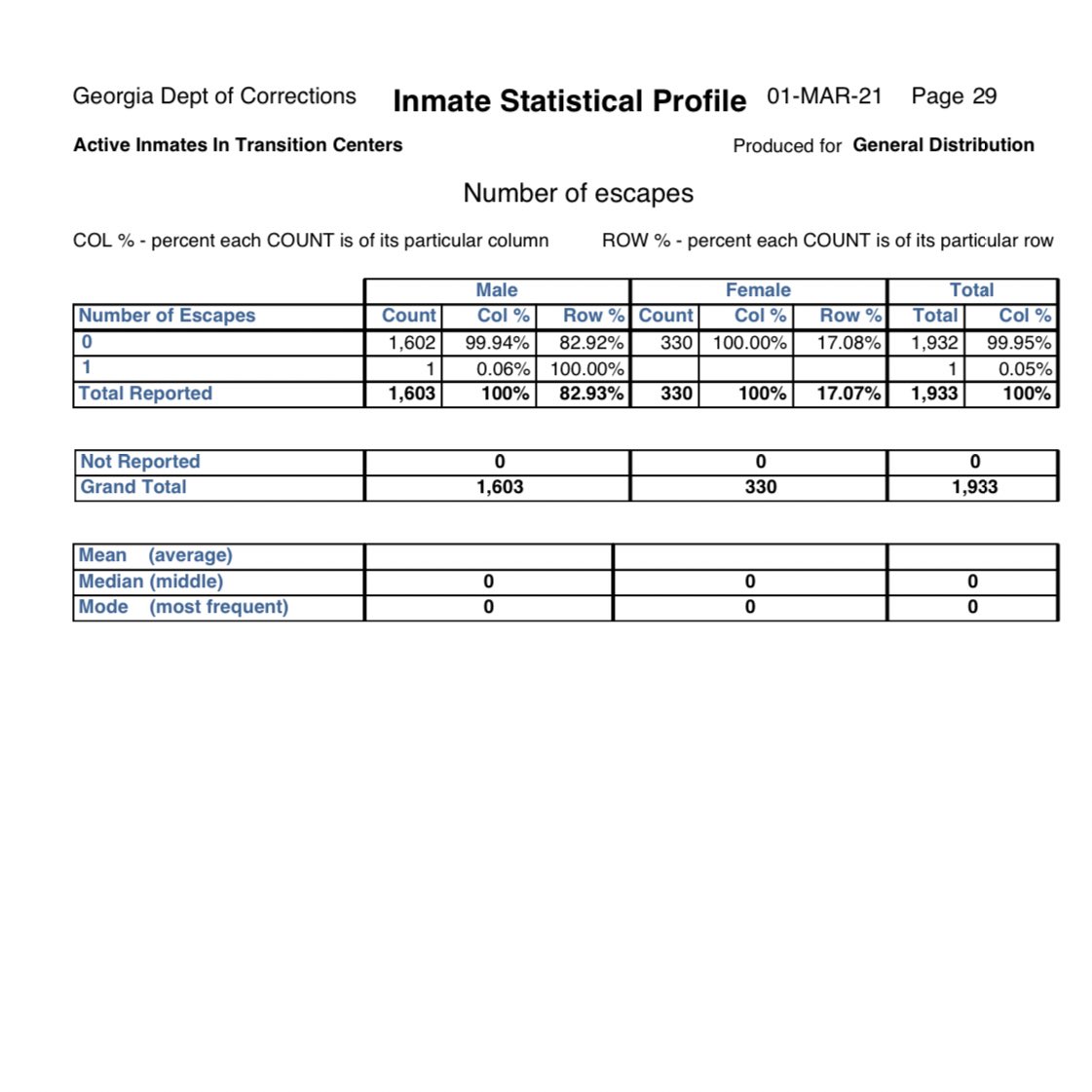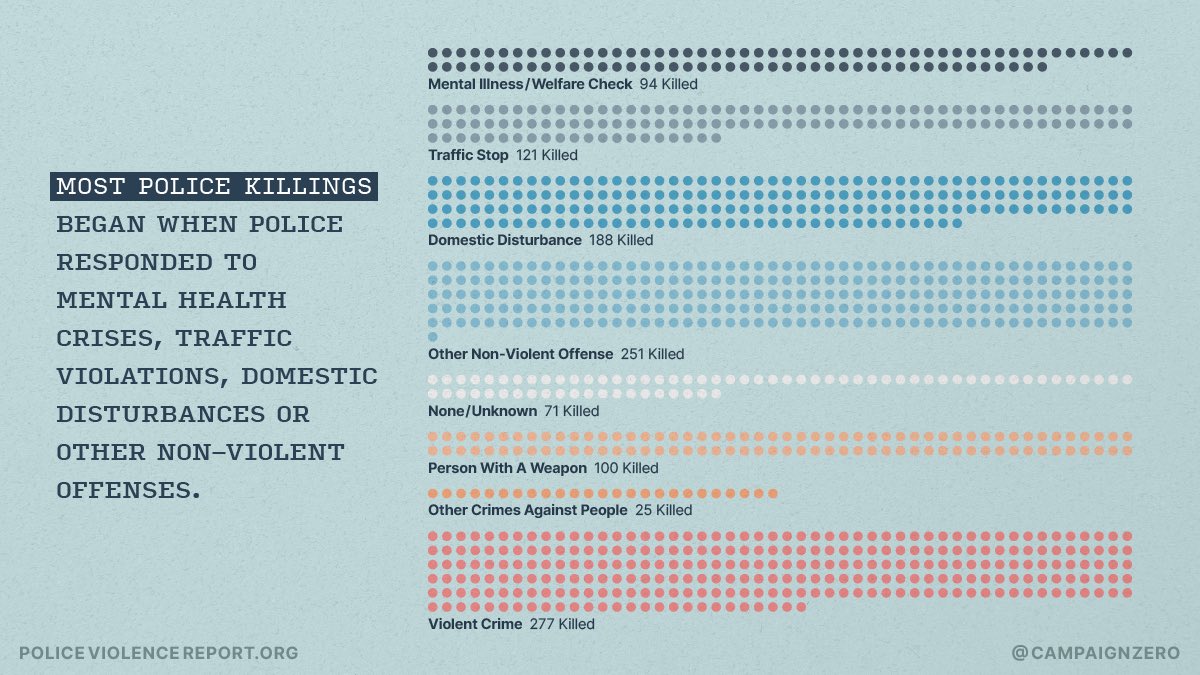
Here’s how often each Columbus police officer used force against people from 2001-2018. Some used force at substantially higher rates. But how often were they held accountable? A thread. (1/x) 
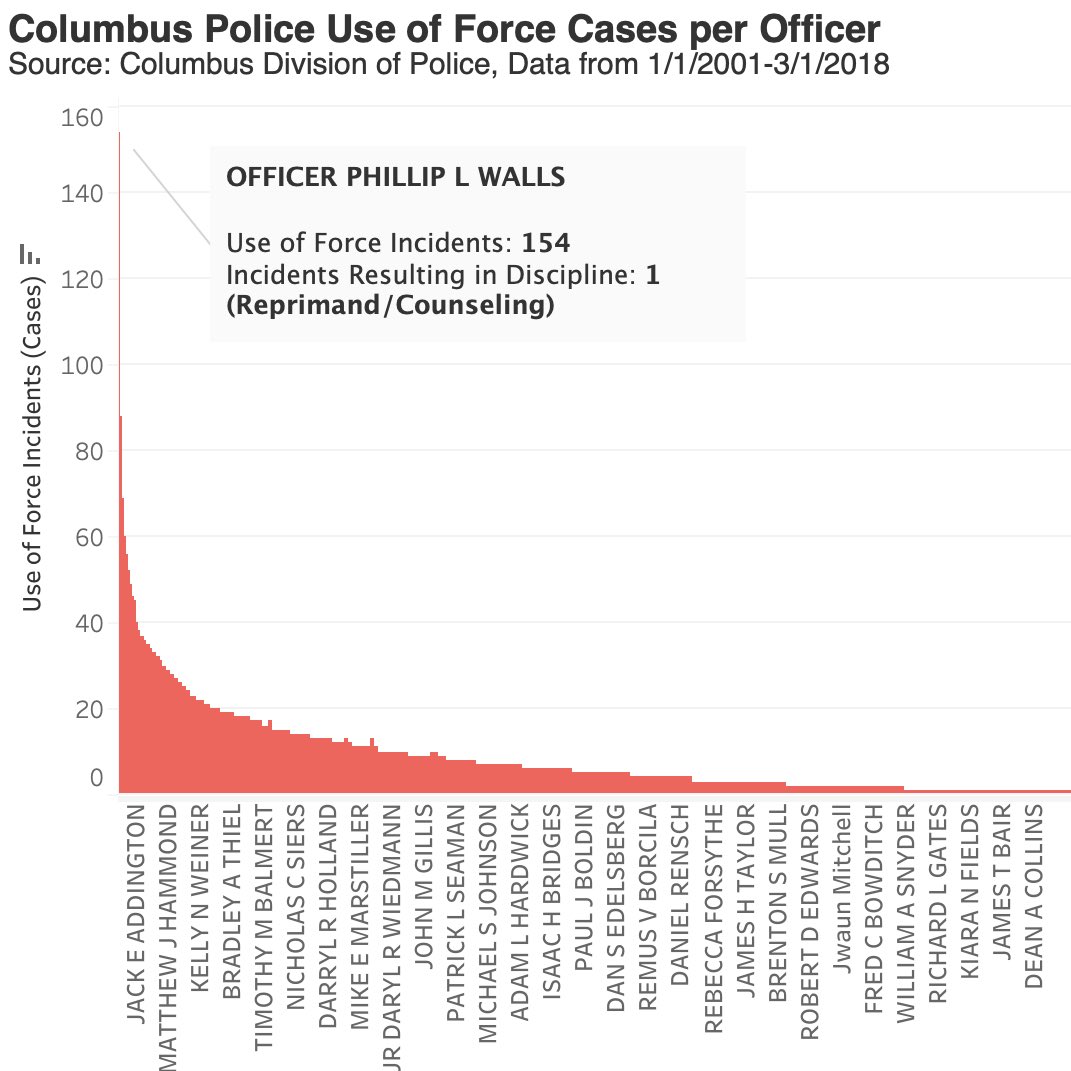
Regardless of how much force they used, few officers were disciplined. 99% of incidents resulted in no discipline. Even for the officers with the worst records. Among officers who used the most force (40+ cases), only 1 officer was disciplined more than reprimand/counseling.(2/x) 

That one officer in the group who was suspended was Adam Coy. But he wasn’t fired until last year when he killed Andre Hill, an unarmed Black man. He was charged with murder in February and facing trial. But this wasn’t a surprise given the data. Let’s take another look... (3/x) 

Most officers who’ve used force 40+ times also have shootings on their records. Even multiple shootings. These officers consistently use more force, including deadly force. Adam Coy was one of the only officers in this group who hadn’t shot someone. And then, predictably, he did. 
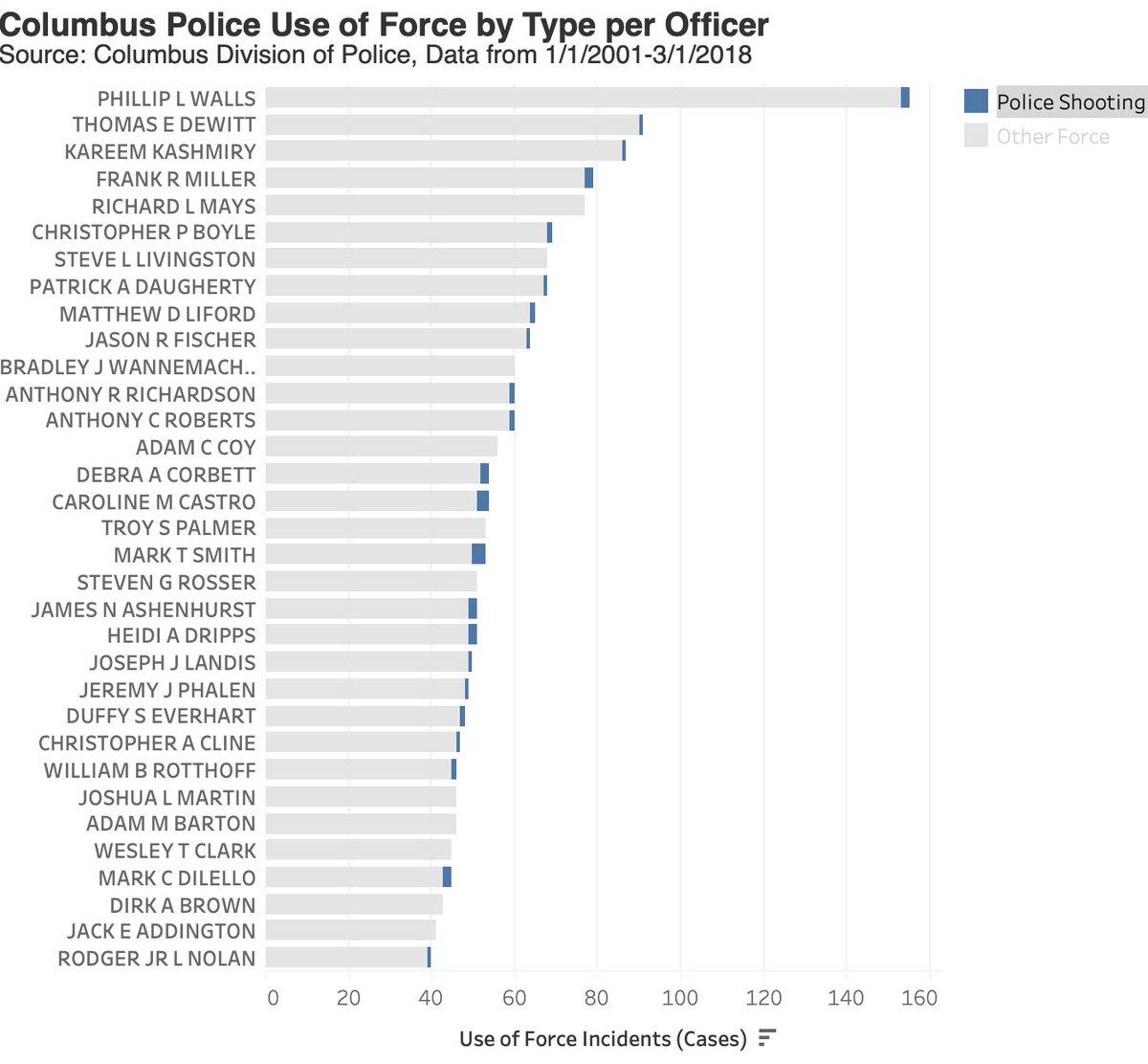
Altogether, a group consisting of only 6% of all Columbus police officers were responsible for 50% of all use of force incidents. And it’s no secret who those officers are. Yet they remain on the force and the public remains at risk. Why? Well... (5/x) theappeal.org/just-6-percent…
These officers are still on the force because of a variety of systemic factors. The system puts police in charge of investigating themselves and deciding what discipline is warranted. But there’s another less obvious reason - the Columbus police union contract... (6/x)
The Columbus police union contract allows officers who are disciplined/fired to appeal by picking an arbitrator to hear the case. Arbitrators can fully reinstate officers if they find a case where another officer wasn’t disciplined as severely for committing a similar act. So...
Of course these arbitrators find cases where other officers weren’t disciplined for similar issues - most officers are not disciplined at all. So in 74% of cases where officers appeal discipline, the arbitrator reinstates them/overturns the discipline. dispatch.com/news/20180603/… 
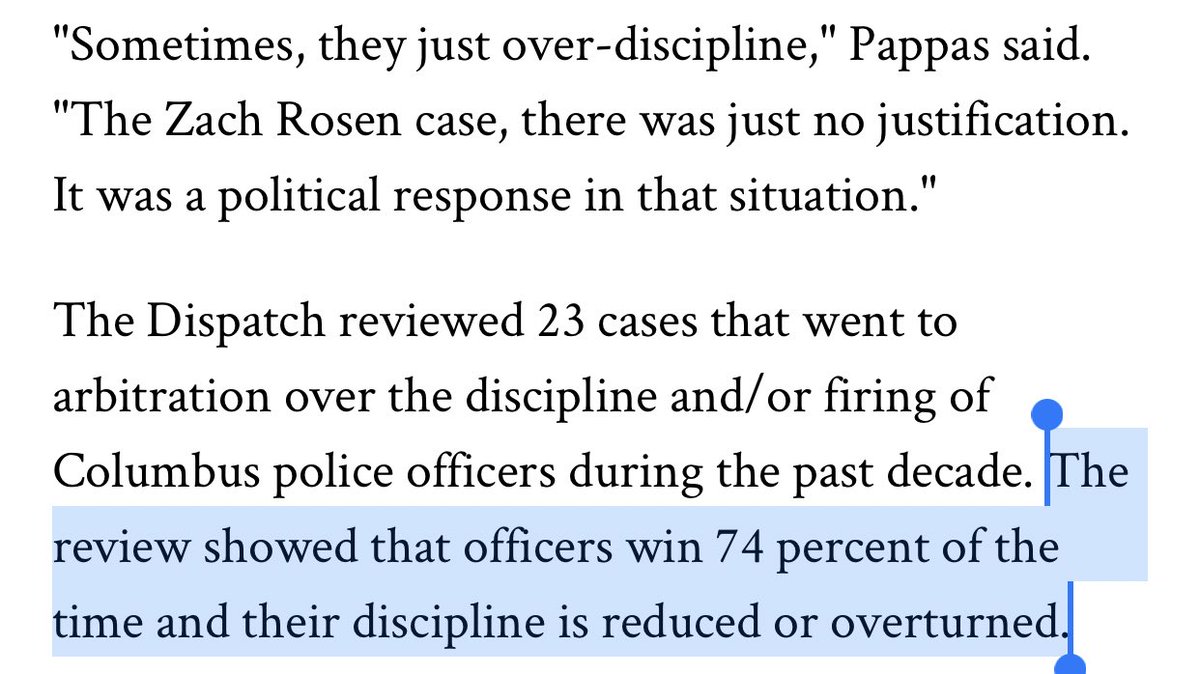
So whatever small, barely perceptible level of accountability exists ends up getting wiped out on appeal. Even Officer Adam Coy - a rare case of an officer fired for excessive force - is reportedly considering appeal via the contract’s arbitration clause. news.wosu.org/news/2021-01-1…
The good news is the next Columbus police union contract is being negotiated. They can replace a system that empowers police/arbitrators with one empowering communities to directly hold officers accountable. They can cut police funding and remove officers with the worst records.
They should do all of that, and more. Just removing the worst officers isn’t going to be enough. The officer who killed #makhiabryant was hired in 2018, making it harder to establish patterns. Removing these officers needs to be done along with bigger, transformational changes.
Here’s the source data for Columbus use of force: drive.google.com/file/d/1IW15jI…
• • •
Missing some Tweet in this thread? You can try to
force a refresh






